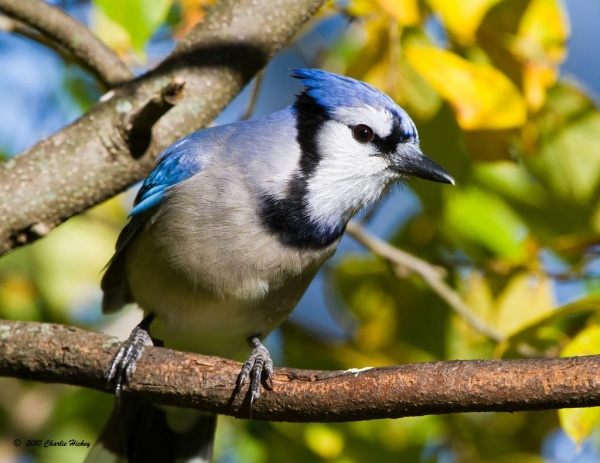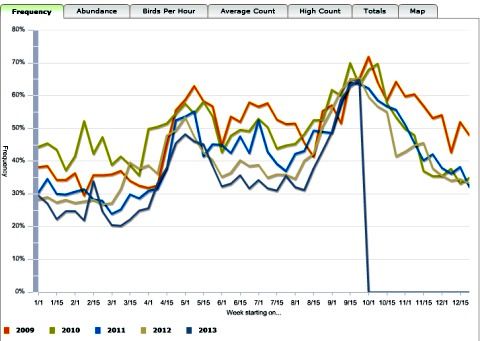There are times when I ask myself, “Where have the blue jays gone?” but this is not one of them. They’re everywhere right now.
I think of blue jays as year-round residents — and they are through most of their range — but a good number of them migrate. Their travels, however, are poorly understood because they’re unpredictable.
Some blue jays stay, others go. Those who leave may be young or old (not just juveniles) and an individual who stayed last winter might leave this year and not the next. Some don’t bother to come “home” in the spring and are found nesting further south. Others come home to nest but go further south each winter. The only hint is that blue jays store and eat acorns in the winter so the mast crop may influence their decision to travel.
Blue jays migrate during the day in loose flocks of 10 to 30 birds that often pass by hawk watches. At Cape May, New Jersey, 1,000 to 5,000 blue jays pass by each day from late September through early October. For the really huge numbers visit Holiday Beach Migration Observatory in Amherstburg, Ontario, 23 miles south of Detroit.
Because jays are reluctant to fly over Lake Erie, they hug the northern shore and funnel past Holiday Beach as they travel southward out of Canada. Typical days in late September and early October see 30,000 to 40,000 blue jays fly by. The highest count was 264,410 on September 28, 2001. Observers must have wondered if any blue jays were left in Canada after a day like that!
We never see numbers like this in Pennsylvania though we get a bump up in spring and fall. Here’s a quick visual from eBird of blue jay population fluctuation in Pennsylvania, years 2009-2013. Click on the image to see the real graph.
The low point for blue jays in Pennsylvania is late December to early March.
Remind me of this when I ask you where the blue jays are this winter.
(photo by Charlie Hickey. Click on the image to see the original.)
p.s. Here are the blue jay record-setting dates from Holiday Beach, Migration Observatory. Click here for all non-hawk species counts.
Blue Jay Record High Counts:
Sep 26: 1986 = 49,280, 1991 = 59,650
Sep 28: 2001 = 264,410*
Sep 30: 1990 = 51,470, 1993 = 87,000
Oct 1: 2009 = 158,300
Oct 5: 2009 = 152,750


I’ve noticed that only in the past several weeks that we now have a few resident blue jays. Did not see them much during the summer and now I know why. They visit the feeders daily and don’t seem to be put off by our resident broad shouldered hawk family. On another note – kudos to QED for a great show last evening on macaws, condors and vultures. Great filming and great information. Thoroughly enjoyed it.
Interesting about Lake Erie. Blue Jays are a big part of conversations around our house. My daughter calls them “Jay Bays”
Thanks for this great post.
This certainly explains a lot. After not seeing a Blue Jay for weeks, two of them decided to visit my yard today and were quite noisy all day. I later spotted two more flying around while taking a walk around the neighborhood. I wonder if the noisy birds were having a territory dispute with some migratory Blue Jays (or vice versa). Thanks for the info!